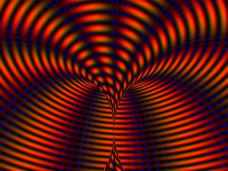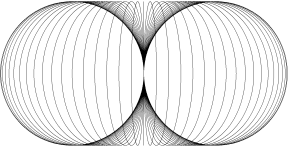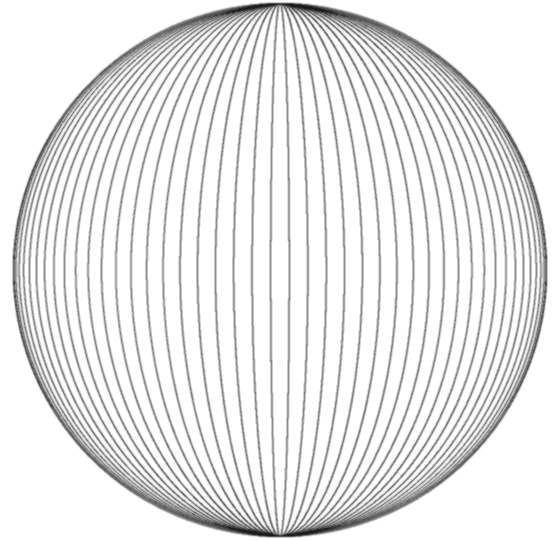| 8128 . | • mathematical universe • horntorus.de • gifs • recent upload • |
|
Horn Torus & Physics  by Wolfgang W. Daeumler Horn Torus'Geometry Of Everything'intellectual game to reveal engrams of dimensional thinking and proposal for a different approach to physical questions a thought experiment as an exercise for abstraction ability and attempt to describe 'fundamental entities' colloquially by reducing physical laws to properties of complex numbers, illustrated with dynamically interlaced horn torus surfaces  cross-section, longitudes spacing 5° construction of a horn torus 2. alternate method: take a sphere with longitudes and push in both poles until these two points meet themselves in the center and merge to only one residual point - our 'Point S' ↓  ↑ For mathematicians: If you consider the originating sphere as Riemannian, then the two points which represent zero and infinity are identical after transformation to the horn torus! That causes a strange, nearly contradictory topology: the horn torus appears as simply connected clopen set* and as differentiable manifold with Riemannian metric though the topological properties have to be reviewed (until now science ignored the horn torus completely) as example we introduce a bijective conformal mapping ← conventional method / back to front page |
| as addition concerning topological questions an excerpt from my paper The horn torus model in light and context of division by zero calculus (2021) It is easily detectable that the 'north pole' N of the Riemannian sphere, which represents infinity, and point 0 (zero) combine in the centre of the
original sphere to one single point S after the described transformation to a horn torus, where all longitudes (meridians) of the horn torus touch the
symmetry axis through N and 0. |
| see also some general comments about dynamic and mathematics |